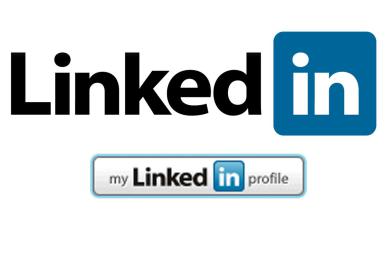How to Create a LinkedIn Profile that Generates Leads
Do you need more leads from LinkedIn?
Are you looking for ways to use your LinkedIn profile to improve your conversion process?
You’re not alone — lots of LinkedIn users want their profile to work as marketing and as a lead generation tool.
In my opinion, the most powerful social media profile you can use is the LinkedIn profile. Especially if you’re looking to do more business.
In this article, you’ll discover the single most important feature of a LinkedIn profile and an efficient way to steer prospects down your conversion funnel.
#1: Content is King at the Top of the Funnel
At the top of the funnel, your goals should be to:
- Grab attention.
- Establish authority on a topic.
- Plant seeds of perception.
Bring value to prospects and customers by enhancing your profile headline , first. It’s the hidden benefit. This approach forces you to think about ways to deliver real value first and in doing so become more referable.
I believe that quality content is the singular most important feature of a LinkedIn Profile. The first step in creating a successful profile is knowing what content will appeal to your prospects.
When a suspect or prospect lands on your profile, their first question tends to be, “Is what you’re saying going to benefit me and my needs?”
LinkedIn users view other profiles for two main reasons, to seek out more information on that person, company, products and services, or because they’re interested in their first impression of it.
Regardless of the reason the LinkedIn profile was visited, the prospect will need to have a clear understanding of what you provide.
#2: Educational Content in the Middle of the Funnel
In the middle of the funnel, your goals should be to:
- Educate connections and interested prospects.
- Engage prospects.
- Get profile visitors to go deeper—to subscribe to your blog or email newsletter and follow you on other social media channels.
The next step is supplying a path where prospects should go next to learn more, which is where LinkedIn media comes into play.
That path is created by having a call to action (more on this later) on your LinkedIn profile.
If you spend all of this time creating a relevant and valuable headline and content but don’t lead the prospect anywhere, all your work will have been for nothing.
In your “Summary”, make sure to tell people where they should go to for more information, what number to call to get a free consultation, or the best way to email you. Include links to your articles, presentations, case studies, checklist, whitepapers, special reports, webinars, tele-seminars, etc. Demonstrate your expertise and position your brand as a valuable resource.
Don’t leave your potential customers and clients hanging. Give them a place to go next (and a reason to go there).
#3: Build Trust and Invite Action at the Bottom of the Funnel
At the bottom of the funnel, your goals should be to:
- Turn “prospects” into buyers.
- Build trust.
- Motivate profile visitors.
- Start a conversation.
One key to ensure your LinkedIn profile is a successful conversion tool is a clear call to action.
What do you want the customer to do as a result of visiting your profile?
If the CTA is evident prospects will know to move forward in that direction. Try and think outside of the box, instead of the CTA asking prospects to “connect with you” think about pushing the prospects towards a demo, or more information.
By showing the prospect that you’re more invested in providing them with answers to their questions, offering solutions to problems , and focusing on their needs rather than attempting to sell them, the prospect will in turn feel as though you’re the expert in their industry, cares about them and wants to help them rather than just sell them a service and product.
Use the tactics outlined in this article to take your profile to the next level. As LinkedIn continues to grow in numbers and gain more media attention, it will prove to add more value to your brand and business.
Question: What do you think? Do you know of other ways to turn your LinkedIn profile into a lead generation engine? Do you have any questions?
About the Company: Indispensable Marketing , a strategic marketing consulting company helps small to midsize businesses improve or create a strong marketing foundation that generates more leads and closes more sales.





